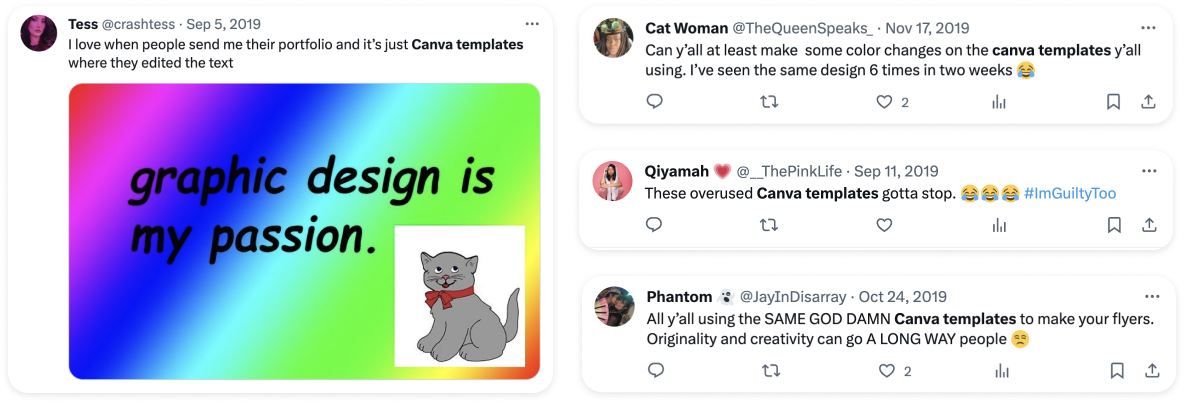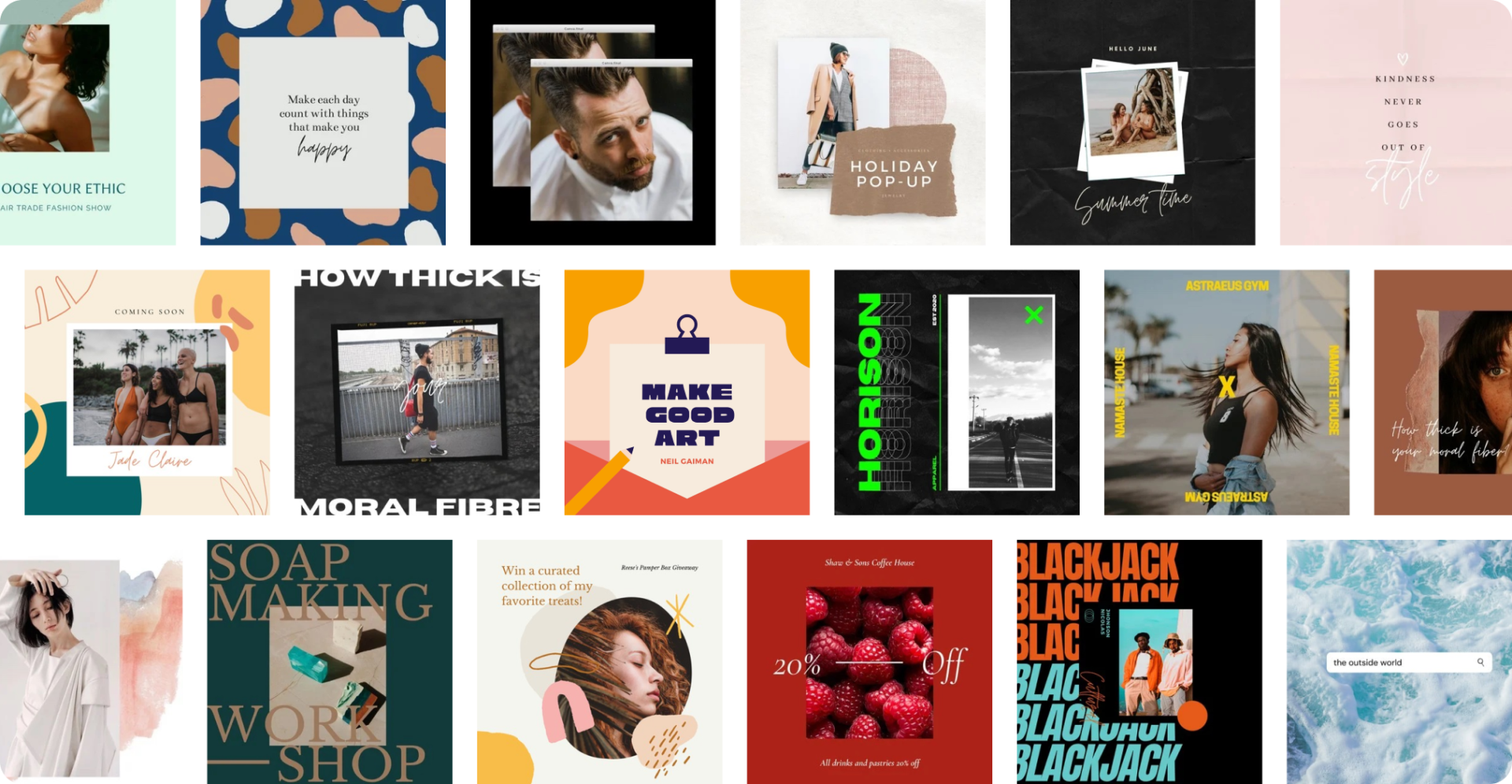The problem
Users want to look like their work was created by a professional designer—without the cost of hiring one, or the pain of becoming one.
Duration
1 year
Team
Product Design x 1
Visual Designers: Started with 24, but grew to 100+
PM x 3
Eng x 5
My role
Design Lead
Research and testing approaches
Data and ROI investigation
New design processes
The solution
By applying Product Design principles and research approaches to the user experience of Canva templates, we developed templates that were easier to use; better designed; more on trend; and which brought users the joy of creation, with none of the difficulty.
Revenue
5x increase in users who activated with a template
Return
2 AGDA Awards and a shift in design industry perception
The process
In 2019, Canva’s templates were often instantly recognisable to many internet users—but in a bad way. They were often joked about on social media as poor quality and uncreative.

While we believed instinctively that it was important to our brand to invest in providing better quality and more on-trend templates and content, we had never tried to validate this hypothesis with data. While the templates we had looked dated to designers (and some users on twitter), was this reflective of how our users felt? What did our users really want our content to look like?
Some of our pre-20189 designs

We experimented by launching 50 new templates into the Instagram Posts category which leveraged real-world research on trending design styles.
Launched into a sea of 59,531 existing templates, within a month these 50 new higher quality templates were servicing 35% of all Instagram Post publishes.
Performing a series of similar experiments showed that on average, users were 2.6 times more likely to publish a template which our designers judged to have better aesthetic quality.
Our newer designs for comparison

But we also hypothesised that visual quality was only one dimension of template success.
I introduced user research techniques to the team, running regular data-based post-mortems on template performance; watching recordings of users editing designs to identify usability issues; and using SEO data to improve template metadata relevance so that we used the same language for design as our users.
From our learnings, we created interactive guides for our designers, to make it easy for them to understand and implement these critical usability and UX improvements into their template designs.
task success
We achieved 5x activation with templates created with this new method.
Scaling internationally
With our investment in multiple dimensions of quality validated, we set out to build scale. Canva operates in 130 countries, and all of them have differing opinions about what makes good design.
To create that truly local design experience, we built a new talent pool of international freelancers, and employed local creatives to build a library of relevant imagery, with data showing users loved designs that truly reflected their own experience.
We also developed a translation tool that would allow us to quickly adapt successful and relevant designs into other languages and cultures, and launched an admin tool which allowed us to manage templates more easily, cutting down on wasted busy work in the team.
Data and monetisation
We began to build our ability to collect large-scale data from production, and spun up a Content Strategy and Experience group to own the process of collecting and learning from data, while driving monetisation via balancing our Pro and Free content offerings.
We’ve also powered monetisation by growing a community of global Creators who earn money designing content on Canva, alongside our In-house creative team. See more here!
Revenue
Grew Creator content revenue from 0 to $290M
Return
ROI of content increased 100% in last 12 months


